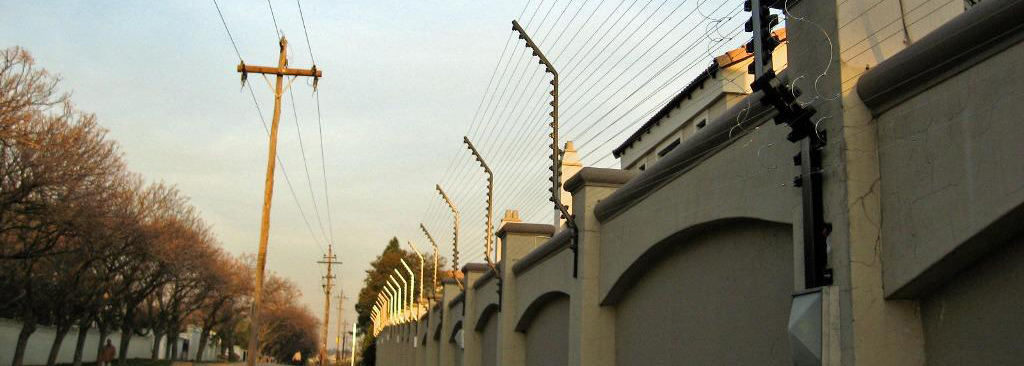Boundary Electric Fencing
Boundary electric fencing is a type of fencing system that utilizes electric shocks to deter animals or humans from crossing the boundary. It typically consists of wires or conductive elements that are electrified, often powered by a central energizer or charger. When an object or person comes into contact with the electrified wires, they receive a non-lethal electric shock, which serves as a deterrent.
Electric fencing can be used for various purposes, including livestock containment, security for residential or commercial properties, and wildlife exclusion. It’s particularly popular in rural areas where traditional fencing may not be practical or cost-effective.
While electric fencing can be an effective deterrent, it’s essential to install and maintain it properly to ensure safety for both humans and animals. Additionally, in some jurisdictions, there may be regulations governing the use of electric fencing, particularly concerning voltage levels and warning signs to alert individuals of the electrified boundary.
Types Of Boundary Fencing:
There are several types of boundary fencing, each with its own characteristics, advantages, and suitable applications. Here are some common types:
1.Wooden Fencing:
Wooden fencing is a classic choice for boundary fencing. It offers privacy, security, and aesthetic appeal. It can be constructed in various styles such as picket, privacy, or decorative lattice.
3. Vinyl Fencing:
Vinyl fencing is known for its low maintenance and durability. It’s resistant to rot, decay, and fading, making it an excellent long-term investment. Vinyl fences come in various styles, including privacy, picket, and decorative.
5. Electric Fencing:
As mentioned earlier, electric fencing uses electrified wires to create a deterrent barrier. It’s commonly used for livestock containment and security purposes in rural areas.
7. Concrete Fencing:
Concrete fencing provides durability and security. It’s often used in commercial and industrial applications where strength and longevity are essential. Concrete fencing can be plain or textured to mimic the appearance of other materials like wood or stone.
9. Wire Fencing:
Wire fencing, such as barbed wire or wire mesh, is commonly used for agricultural and rural properties. It’s cost-effective and provides security and containment for livestock.
2. Chain Link Fencing:
Chain link fencing is durable, affordable, and low-maintenance. It’s often used in residential, commercial, and industrial settings where visibility and airflow are desired.
4. Metal Fencing:
Metal fencing, such as wrought iron or aluminum, provides a classic and elegant look. It’s sturdy and can be customized with decorative elements. Metal fencing is often chosen for its durability and security.
6. Bamboo Fencing:
Bamboo fencing offers a natural and eco-friendly boundary solution. It’s sustainable, lightweight, and aesthetically pleasing. Bamboo fencing is ideal for creating a tropical or Asian-inspired atmosphere.
8. Composite Fencing:
Composite fencing is made from a blend of recycled plastics and wood fibers. It offers the appearance of wood with the low maintenance and durability of plastic. Composite fencing is resistant to rot, insects, and fading.
Electric fences are favored by some for several reasons. They provide a strong deterrent against intruders due to their shock capability, making them particularly effective for security purposes. Unlike traditional walls or fences, electric fences are difficult to climb over or cut through without

Boundary Electric Fencing
triggering an alarm. Additionally, they can be installed relatively quickly and are often less visually obtrusive compared to solid barriers. However, it’s essential to ensure proper installation and compliance with safety regulations to prevent accidental shocks and ensure effectiveness.
Heights For Boundary Fencing:
The height of boundary fencing can vary depending on several factors, including its purpose, local regulations, and aesthetic preferences. Here are some common height guidelines for different types of boundary fencing:
It’s important to note that these height guidelines are general recommendations, and specific requirements may vary depending on local building codes, zoning ordinances, homeowner association rules, and any other relevant regulations. Before installing boundary fencing, property owners should always check with their local authorities to ensure compliance with applicable laws and regulations.
looking For Boundary Electric Fence: Click here
